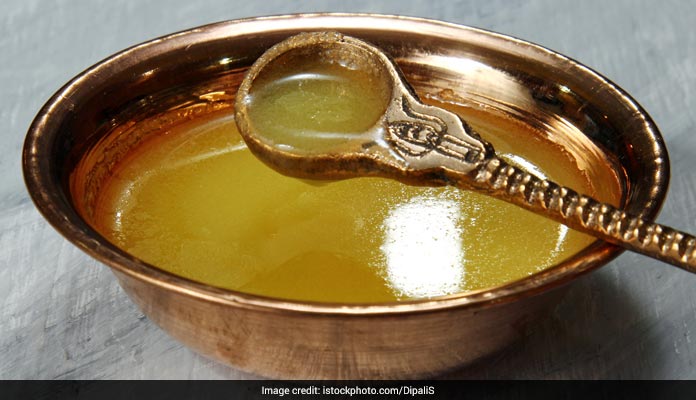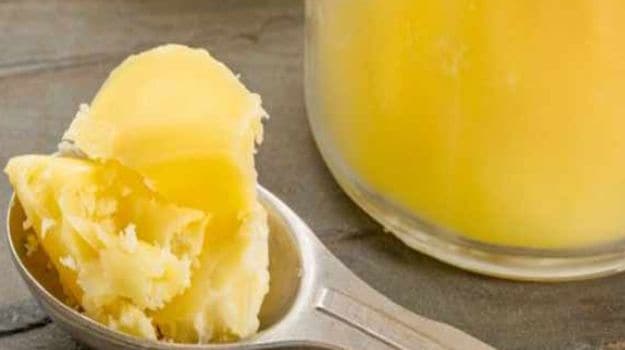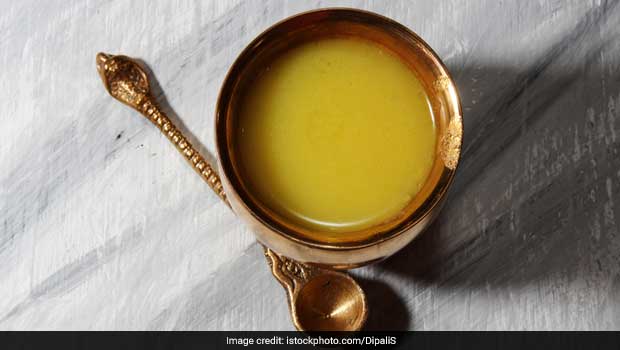Vedic cooking divided all food into kachcha khana (not cooked in ghee and ritualistically impure) and pucca khana (sanctified by cooking in ghee). While modern Indian kitchens may no longer pay heed to such divisions, festive rituals make sure that we are continuing with these traditions, even if unknowingly.

Foods cooked in pure ghee is deemed fit for the Gods
Have you ever wondered why the Navami halwa is only cooked in ghee? Or why pooris were traditionally fried in "pure ghee" to be fit as festive offerings? As food historian KT Achaya has recorded, there were strict rituals even concerning the order in which ghee was added to the food, which determined whether the resulting dish would turn out to be pucca khana, fit for festive rituals, or kachcha khana. Rice had to be first roasted in ghee, before adding milk and sugar to it to give you kheer - offered as prasad, and a typical ritualistic pucca food. On the other hand, if you simply boiled milk and rice together, adding ghee later, it would be deemed doodh-bhaat, a kuchcha khana.
On Navami, the halwa that is made as prasad has semolina roasted in ghee before water and sugar is added to it, thus making it sanctified food. Similarly pooris, fried in ghee, are also deemed ritualistically pure and thus festive foods.

On Navami, the halwa that is made as prasad has semolina roasted in ghee; Image credit: Istock
The taste of ghee is of course unique and despite suffering a major loss of reputation some decades ago when it was deemed to clog up arteries and thus labelled "unhealthy", ghee is back as a superfood even amongst modern users. Nutritionists these days promote it as a healthy fat - at any rate better than the daldas and other ghee-like products full of transfats that had replaced it in the 1960s-70s. Used in moderation, it may be better than many of the refined oils that we indiscriminately use. It is certainly one of the oldest foods of the Subcontinent and suited thus to our dietary conditions.
The traditional way to make ghee at home has always been by 1. Boiling milk, 2. Adding a little curd to it to make it into fresh curd, 3. Watering and churning this to give butter, and 4. Heating the curd to boil away the water and obtaining ghee. Charaka recommended its use during autumn (according to Achaya), so it is perhaps fitting that the Navratras that usher in the season, also usher in its enhanced use in our foods.

Ghee is back as a superfood even amongst modern users; Image credit: IstockAbout the Author:
Anoothi Vishal is a columnist and writes on food for The Economic Times and NDTV Food, and runs the blog a moveablefeast.in. She tracks the business of restaurants and cuisine trends and also researches and writes on food history and the cultural links between cuisines. Anoothi's work with community-based cuisines led her to set up The Great Delhi Pop-Up three years ago, under which she promotes heritage, regional and community-based cuisines as well as researched and non-restaurantised food concepts. She has also been instrumental in reviving her own community's Kayastha cuisine, a blend of Indo-Islamic traditions, which she cooks with her family and has taken across India to a diverse audience.
Disclaimer:
The opinions expressed within this article are the personal opinions of the author. NDTV is not responsible for the accuracy, completeness, suitability, or validity of any information on this article. All information is provided on an as-is basis. The information, facts or opinions appearing in the article do not reflect the views of NDTV and NDTV does not assume any responsibility or liability for the same.










